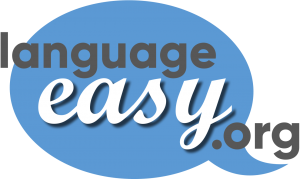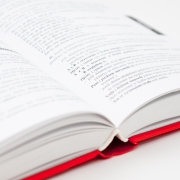German Alphabet – Tongue-twister ?
Everybody knows that the basics of learning a language is its alphabet, and in the case of the German alphabet, you must have experienced that when it comes to the umlaut ä, ö, ü and ß it seems to be more of a jawbreaker than letters of a language.
The German Alphabet or ABC (referring to the letters of A – Z) is related to the Latin alphabet with a few additions.
German is the most spoken mother tongue throughout Europa and currently around 15, 4 million people learn German, so I’m sure that some of you came across those difficulties.
Good thing is that of the letters are quite simple to read and the only difference mostly is the pronunciation, if we would compare it for example to the English alphabet. But what is it, that so many people are able to learn those weird letters with the two dots on top?
Here are some basic but effective tricks for the German Alphabet:
The Ä (combination of ae)
This one is the easiest one to learn, as we all use it or have used it if we speak English… You don’t believe me? Well I bet every one of us knows or has been to MC DONALD’S, right?
Let’s pay attention only to the way you pronounce the “MC“, a little bit like “Mac“. Now if you listen closely it sounds like the German ä. Just repeat the word again and compare it to a YouTube video about the letter “Ä“, you will be surprised….
The Ö (combination of oe)
This one might be a little trickier than the “Ä“, however we still have one English and one French word that sounds whose letter sounds similar to the German “Ö“. The english word “bird“ for example ; or even the word “word” that sounds like they have an “Ö” in it, because you do not pronounce the “o” in the word as you would do it in the English alphabet. If you are familiar with French, you can also refer to the word “bleu” as this sounds as you would say “blö“.
I would also recommend to use as an exercise a YouTube video practicing the “Ö” and the other umlauts.
The Ü (combination of ue)
Now that is the toughest one of all. There is no equivalent word that would sound in any kind of way as the umlaut in English. However, if you are a little bit familiar with French you will find a lot of words that sound like the “Ü“, for example the word “Rue“. Therefore, try to speak out the word and compare it the the YouTube video mentioned above.
Now I hope those comparisons make it easier for you to dive into the German language. However, there are a lot of other things you can do to learn the German alphabet or German in general easier. So above we covered the most difficult umlaut so all others are quite easy to learn.
However there might be another letter in our alphabet with which you might not be familiar with. Let’s take a look at it:
The ß (ALSO CALLED THE SHARP S)
The sharp is is similar to the double s that you can find in English as well, for example Swiss. Now the Germans love rules, so to use the sharp ß here are the rules: – It will be used if the vowel before is spoken long, for example Straße (German for street). – It will be written after a long umlaut (ä,ö,ü) and so called Diphthong (which is for example du, ei or au) like the word heißen (German for called a name). BUT (otherwise it would be too easy..) – If the word ends after the Diphthong with a ß you always write s not ß!
The best ways to apply the German alphabet and German language:
- Old fashioned German lessons at Language-online language school : you can join them in a group or one-to-one lesson. There your teacher will help you to with how to pronounce the German alphabet right.
- .. the new way of learning, the most used and named the best are for example Babbel and Duolingo. However, you need to use the App frequently and stick to it.
- Tandem Learning. This form is a sort of giving and taking of lessons. For example, I live in Germany but I want to learn French I can download the App, post that I want to learn French and speak German. So if a French speaking person can write me and we can set up virtual meetings to practice French and German.
- The “Birkenbihl-Methode”. Now this learning method uses a sort of “decoding”, where a text will be translated as close as possible, word by word into the mother tongue. In the next step the same text will be spoken while the foreign language with the subtitle in the mother tongue so the vocabulary will be learned. In addition, there can be series watched in the foreign language with subtitles to deepen the learning process.
- Community language learning. This is using the same base as Tandem learning. However here several students, mostly adults, gather together to use their fear of speaking or learning a new language and based on the conversation occurring they learn slowly but steady the language.
Now the most important thing is that you find a way fitting yourself so you feel comfortable and practicing continuously.
Perfect ways to self-train German can be also found online, from beginner level A1 till expert level C2.
The most common websites with online exercises are the following:
- Bildungsserver
- Goethe Institute
- DID Deutsch Institute
- Klett
- Cornelsen
- Leicht Deutsch lernen (recommended from language schools and institutes in Germany
I hope this Article helped you through the first difficulties of the German language and the German alphabet and for those who want to start to learn or already learning, some good alternatives to the “old fashioned”classroom classes and some additions to improve your German knowledge.
Also a lot of Facebook groups to interact in German, a so to speak modern pen-pal relation. And who knows, maybe it will involve into a Student exchange so you will be able to practice all the nice words with “Ö“, “Ü” and “Ä” in Germany. Because there is no better way to learn a language than jump right into it and use the good old but effective method of “learning by doing” !



